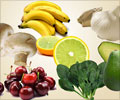Researchers from Texas and Colorado revealed that they have identified a number of factors that influence the likelihood of spinach being contaminated by E.coli before harvest in farms.

E. coli contamination of spinach on farms in Colorado and Texas was 172 times more likely if the produce field was within 10 miles of a poultry farm, and 64 times more likely if irrigated by pond water, says Park.
As E. coli is commonly used as an indicator of fecal contamination with food-borne pathogens, the practice of hygiene—availability of portable toilets and hand-washing stations for workers in the fields —and the absence of grazing or hay production on the fields prior to planting spinach, reduced the risk seven-fold.
Other potential risk factors tested in the study included numbers of workers, farm size, organic vs. conventional production, the use of chemical fertilizers, compost, and manure, says Park. The researchers assayed 955 spinach samples from 12 farms in the two states, finding that generic E. coli was present on 63 of them (6.6 percent).
Of particular note, the researchers tested their statistical model for spinach contamination to determine how accurately it was able to pinpoint the level of contamination. "The assessment of the predictive performance of a developed statistical model is largely omitted from food safety studies," says Park. Their methodology may serve as a useful template for future investigations of contamination on farms, he says.
"Because produce is commonly consumed raw, it would be best to prevent pre-harvest contamination by food-borne pathogens all together or at least to reduce it," says Park.
Advertisement















